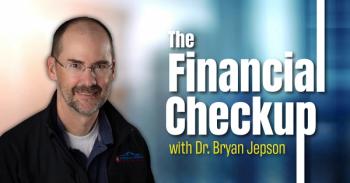
- Medical Economics October 2024
- Volume 101
- Issue 9
Direct primary care: A path to revitalizing primary care
Are you burned out on fee-for-service?
As a primary care physician, I am all too familiar with the challenges of modern health care. The increasing administrative burdens, shrinking reimbursement rates and looming threat of physician burnout can feel overwhelming. My journey from a
When speaking with colleagues, from social workers to physicians and all those caregivers in between, it is clear that also delivers on the quintuple aim described by Dr. Garrison Bliss, the father of DPC: “happier patients, happier doctors, lower costs, better health outcomes.”
Fee-for-service burnout
My medical career began in a traditional fee-for-service setting, where the pressure to see more patients in less time, with mandates coming from nonphysician “leadership,” often conflicted with my desire to provide comprehensive, personalized and thoughtful care. The system’s demands left little room for meaningful patient interactions, and much of my time was consumed by paperwork and bureaucracy. I experienced everything I disliked about medicine when I was not with the patient.
It became increasingly clear that this model was unsustainable for me, professionally and personally. The relentless pace contributed to burnout and a sense of disillusionment, which led me to explore alternatives that aligned more closely with my values.
The promise of DPC
Direct primary care presented itself as a solution at a time when I needed it most. I had been under negotiations to try to hold on to my salary and not go to the relative value unit system, in which each time you see a patient, a clinician needs to translate that diagnosis or service into a code. That code represents a dollar amount the physician gets paid for. It’s like collecting as many tickets as one can at Chuck E. Cheese: the more tickets you have, the larger the prize you can get.
The DPC model removes the middleman of insurance companies dictating what care is allowed and what reimbursement is given for the care provided. It allows physicians to focus on patient care directly without the constraints of billing codes and reimbursement games. DPC patients typically pay a monthly membership fee covering a wide range of primary care services.
Without coding and reimbursement games, physicians can spend more time with their patients, and when primary care doctors have the time they need, 80% to 90% of everyday issues can be handled in the clinic without a referral.
The DPC leap of faith
The transition to DPC had its challenges. It required a leap of faith, a willingness to learn new business skills and a commitment to practicing medicine differently. For anyone who has seen “Indiana Jones and the Last Crusade,” it’s sometimes akin to Indy crossing the invisible bridge to try to reach the Holy Grail. However, the rewards have been profound. The ability to spend more time with each patient, focus on preventive care and build stronger patient relationships has rekindled my passion for medicine.
The benefits of DPC extend beyond the practice’s financial stability. For patients, the model provides enhanced access to their physician, including extended visits, direct communication and a focus on preventive health as well as same and/or next-day care.
For physicians, DPC offers a reprieve from the high-pressure environment of traditional practices where only one issue can be discussed at a time and a doctor can sometimes be double- or triple-booked per allotted time slot. The model alleviates many sources of burnout by reducing administrative duties and increasing job satisfaction because DPC physicians are not working for codes; they are working for their patients.
A call to action
The health care landscape is ripe for innovation. As primary care physicians, we must seek models that restore the joy of practice and prioritize patient well-being. DPC is one model that is already delivering a sustainable alternative to today’s challenges.
Maryal M. Concepcion, M.D., is a family medicine physician who transitioned from a fee-for-service model to direct primary care. She is the host of the award-winning “MyDPCStory” podcast, a DPC advocate and a mom of two.
Articles in this issue
about 1 year ago
The medical malpractice landscape: What physicians need to knowabout 1 year ago
9 steps for medical practices to boost cybersecurity hygieneabout 1 year ago
Real estate investments will likely rise as rates fallabout 1 year ago
Malpractice strategiesabout 1 year ago
Five leadership tips for practicing physiciansabout 1 year ago
The cost of not knowing about type 1 diabetesabout 1 year ago
Finding solutions for physician burnoutNewsletter
Stay informed and empowered with Medical Economics enewsletter, delivering expert insights, financial strategies, practice management tips and technology trends — tailored for today’s physicians.














